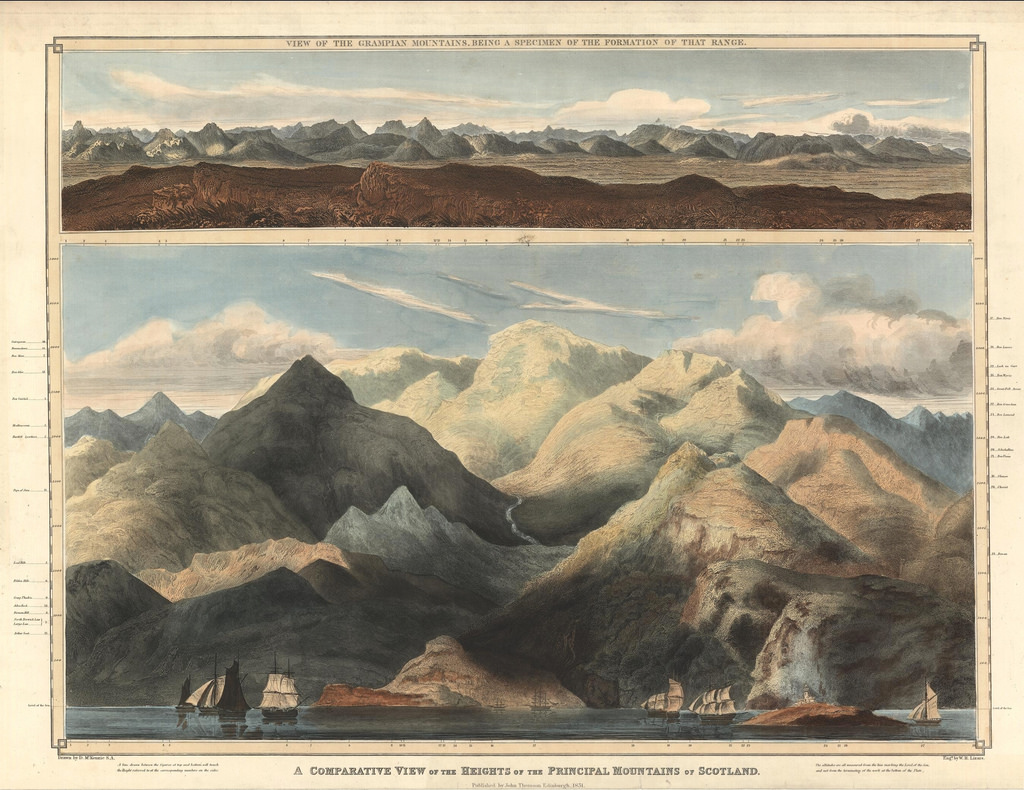Dawn attempts to answer a deceptively simple question.
The question which forms the title of this blog post seems almost absurd. Everyone knows what a mountain is, don’t they? The difference between a ‘hill’ and a ‘mountain’ is one that can be discerned by the simple act of measurement. This is certainly what cinema-goers of the mid-nineties would have learned from The Englishman who Went up a Hill but Came down a Mountain. Starring a fresh-faced Hugh Grant, the film tells the story of a rural community in Wales spurred into action by the realisation that their local mountain, measured by English cartographers at just under 1000ft in height, was about to be downgraded to a hill. The villagers hasten to build a mound of earth at the summit of the mountain, ultimately bringing it to a height above the magic number of 1000ft.
It would seem, then, what the question ‘what is a mountain?’ can be answered fairly clearly in the 21st century – except for when it can’t. Dig a little deeper, however, and it becomes apparent that all is not quite so simple: different geologists, different environmental agencies, all have their own definitions of the level of elevation, prominence, ruggedness, or steepness required to make a hill a mountain. [1] The geographers Bernard Debarbieux and Gilles Rudaz have suggested that Saint Augustine’s description of time might usefully apply to the category of ‘mountain’: “If no one asks me about it, I know: but when I try to explain it on demand, I do not know!” [2] We might not be able to produce an objective, unassailable definition of ‘a mountain’ when pushed to do so, but we know a mountain when we see one. Or, to put it another way: mountains are what we make of them, and not just in the literal sense of building one up to height.
This answer to our opening question offers both a challenge and an exciting opportunity to historians or literary scholars seeking to consider the ways people in the past experienced mountains. The challenge is that it means we must be careful to avoid bringing our own modern assumptions of ‘what makes a mountain’ to our research, for example in overlooking sources relating to areas of the world that, to us, don’t seem ‘very mountainous’. The opportunity is, of course, in stepping beyond these assumptions and seeing well-known landscapes according to new scales: the hills of the Peak District may seem fairly dinky compared to the Alps and Himalayas that loom large in current-day mountain perceptions, but to a seventeenth-century traveller who had never seen the Alps, nor heard of the Himalayas, Mam Tor (517m) could be experienced as a geological giant.
Far from having so obvious an answer as to be ridiculous to even ask, the question in the title of this blog post is at the heart of understanding the experience of mountains in past contexts. The first question to ask, then, of any historical source relating to the landscape, is not ‘what did the writer think about mountains?’ but rather ‘what did the writer think a mountain was?’
[1] For a summary of various attempts at defining a mountain, see John Gerrard, Mountain environments: An examination of the physical geography of mountains (London: Belhaven Press, 1990), pp. 3-7.
[2] Bernard Debarbieux and Gilles Rudaz, trans. Jane Marie Todd, The Mountain: A Political History from the Enlightenment to the Present (Chicago and London: University of Chicago Press, 2015), pp. 2-3.
Illustration: ‘Comparative view of the heights of mountains of Scotland’ from John Thomson’s Atlas of Scotland. CC BY 2.0, Paul K.

